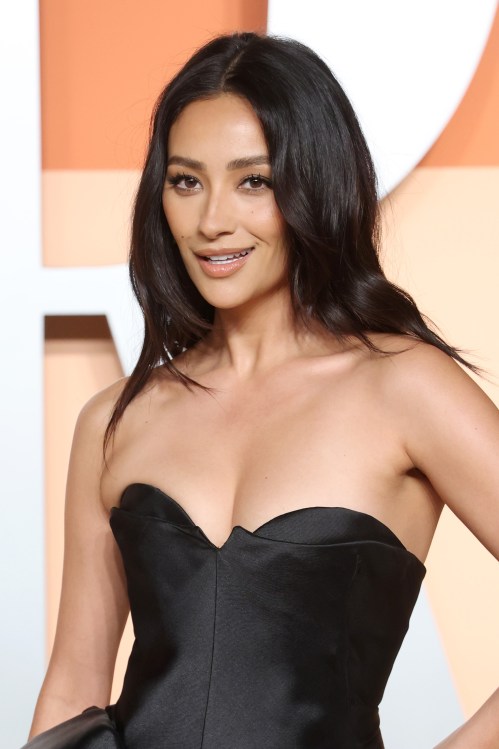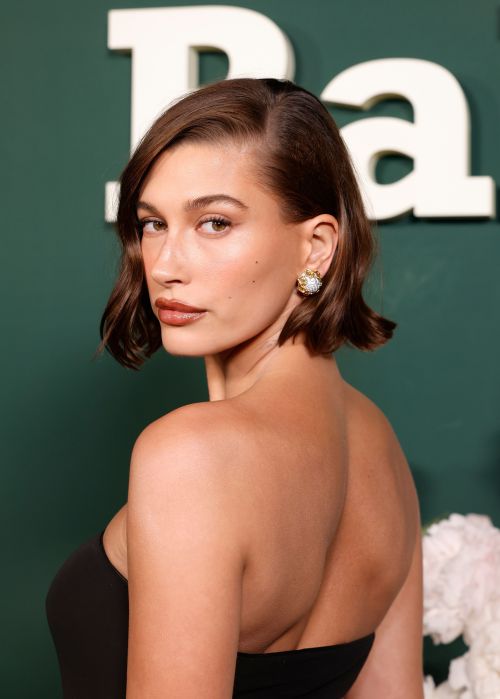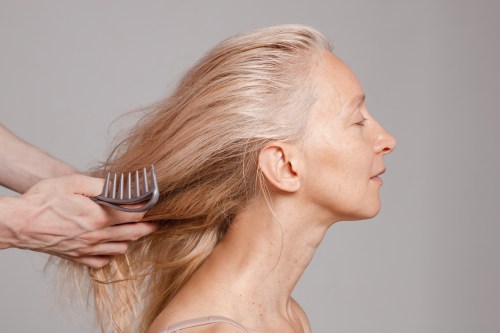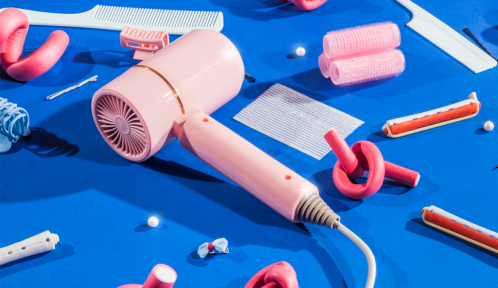Our editors independently select these products. Making a purchase through our links may earn Well+Good a commission
5 Common Conditioner Mistakes That Hairstylists See People Make All the Time
Stylists share the biggest mistakes they see people make in their conditioning routines, and explain how to use conditioner theright way.

There are some pretty important shampoo rules that most of us know to follow for the sake of healthy hair: Limit washes, exfoliate regularly, and rinse well. But when it comes to conditioner, things can get slightly more confusing.
Experts in This Article
hairstylist and extension artist
Tonya Thompson is the co-founder of Dreamgirls, a haircare brand dedicated to nourishing natural hair.
hairstylist and creative director at Sachajuan
According to hairstylists, there are a few common mistakes that people make in their conditioning routines. Since a conditioner is the main method to keep your lengths shiny and moisturized, you’ll want to be sure you’re using it right. With that in mind, scroll through for five things pros say you should not be doing with your conditioner—plus exactly how to apply it for your healthiest and shiniest strands yet.
1. Slathering it on the roots
While shampoo’s job is to keep your scalp healthy, conditioner is responsible for nourishing your lengths. Because of this, you’ll want to keep it far away from the root, and instead focus on your ends. “When you shampoo your hair, the objective is to cleanse the scalp of any oils or product buildup—and when you apply conditioner to the scalp area after washing it, you are putting those same oils back to the area you just cleaned,” says celebrity hairstylist Michelle Cleveland. “The result will be flatter, less voluminous hair.” Think about holding your hair in a ponytail, and only apply conditioner to the sections below your fist.
2. Applying it in reverse
Not only do you want to avoid putting conditioner on your scalp, but you actually want to apply it starting from the ends of your hair instead of at the roots. “Most people [pump] a huge blob of conditioner into their hands and then smack it down right on their scalp and roots—this is a no-no, because the hair at your scalp is the healthiest and conditioner should go where the tangles and damage and stress is, which is more towards the ends of your hair,” says Trey Gillen, the artistic director at hair-care brand Sachajuan. “Think about it: If your hair is past your shoulders, then that hair has been on your head for about four years or longer, and it needs some conditioning TLC.” Apply conditioner starting at the ends, which will give the most damaged part of your hair the most attention. Then, comb through to evenly disperse the product, let it sit for five minutes (or more if you’re doing a deep-conditioning mask), and rinse thoroughly.
3. Skipping out on deep conditioning
Every once in a while, your hair needs more than what your usual rinse-off formula can offer, which means it’s time to reach for a mask. “The biggest mistake people can make when it comes to conditioning their hair is not giving their hair a deep condition every six weeks,” says Tonya Thompson, co-founder of DreamGirls Hair. “Deep conditioning natural hair promotes elasticity which is a sign of healthy and well-moisturized hair. It also restores your hair’s pH balance, increases shine, [and] improves texture.” She recommends slathering on the DreamGirls Revival Deep Treatment ($34) every six weeks to properly moisturize your strands.
4. Using the wrong amount
If you’ve ever stepped out of the shower with greasy strands, you likely know that there’s such a thing as using too much conditioner. But according to Cleveland, it’s also possible to use too little. “If your hair feels heavy and weighed down after you dry it, you’ve used too much; if your hair still feels dry and rough, you haven’t used enough,” says Cleveland. “The best way to figure out how much is the right amount of conditioner is to apply about two quarter sizes worth of product and comb through.” If you can glide your fingers easily through your hair, you’ve used enough, but if not, add a quarter-sized amount at a time until you can. And if you’ve got fine hair, you may not need to condition every time you wash your hair. Gillen suggests using a product like Sachajuan Leave-In Conditioner Spray ($36), which won’t weigh your hair down. Then, once a week, you can give your strands proper conditioning in the shower.
5. Using the wrong product
With conditioner, the formulation is everything. “Silicones and dimethicones are usually used in less expensive conditioners as they trick the consumer into thinking their hair is soft and healthy because they add shine, however, these ingredients are artificial and not good for the hair,” says Cleveland, who suggests staying away from these ingredients to keep hair healthy. Instead, look for products made with natural oils, like jojoba, coconut, or argan. One thing to keep in mind? If you have fine or thinning hair, too much of these oils can “weigh the hair down and create a dull, greasy and lifeless look,” so be sure to use a light touch when applying.
Now that you know how to keep your strands nourished, check out the video below for everything you need to know about keeping your scalp healthy, too.
Want even more beauty intel from our editors? Join Well+Good’s Fine Print Facebook group (and follow us on Instagram) for must-know tips and tricks.
Sign Up for Our Daily Newsletter
Get all the latest in wellness, trends, food, fitness, beauty, and more delivered right to your inbox.
Got it, you've been added to our email list.










